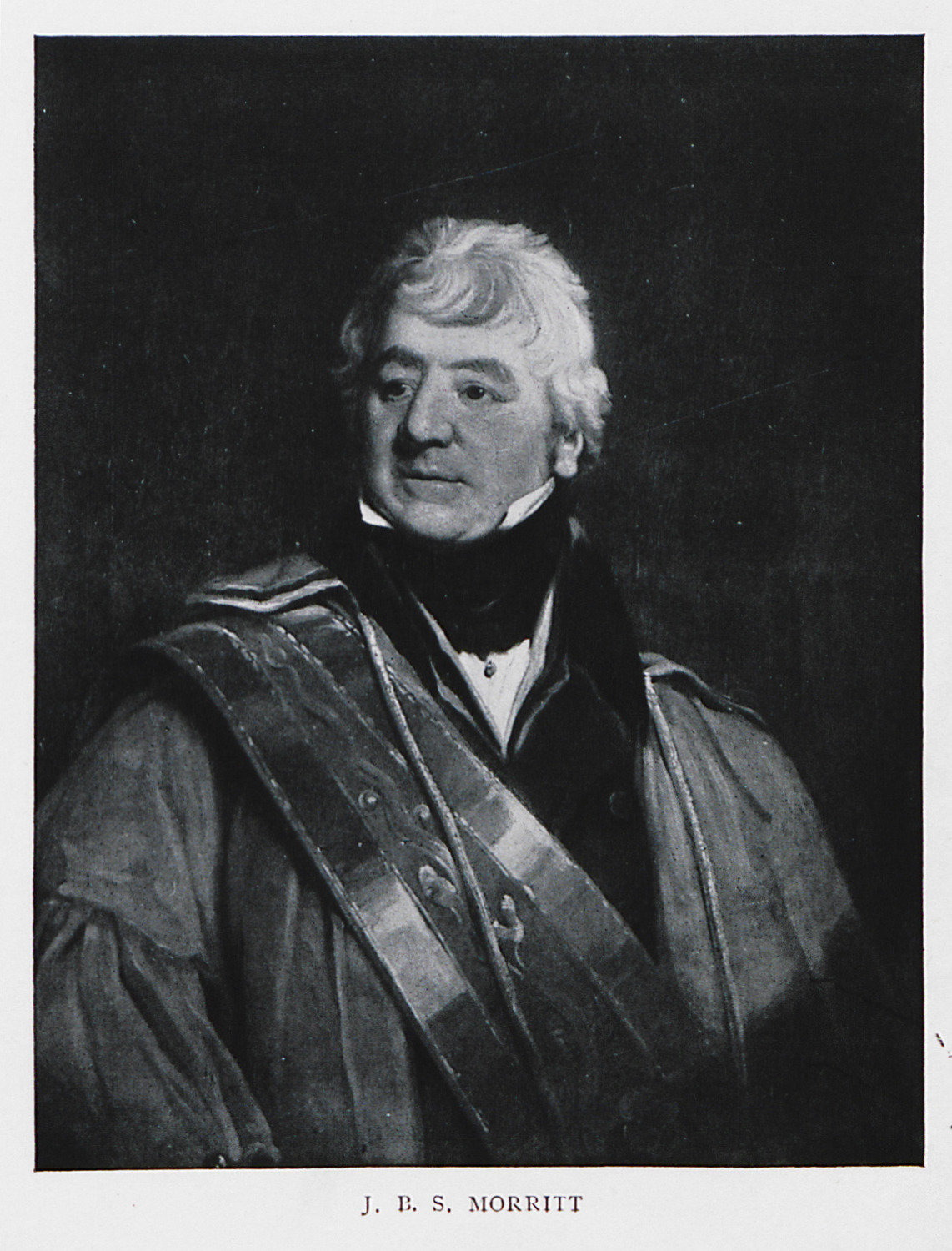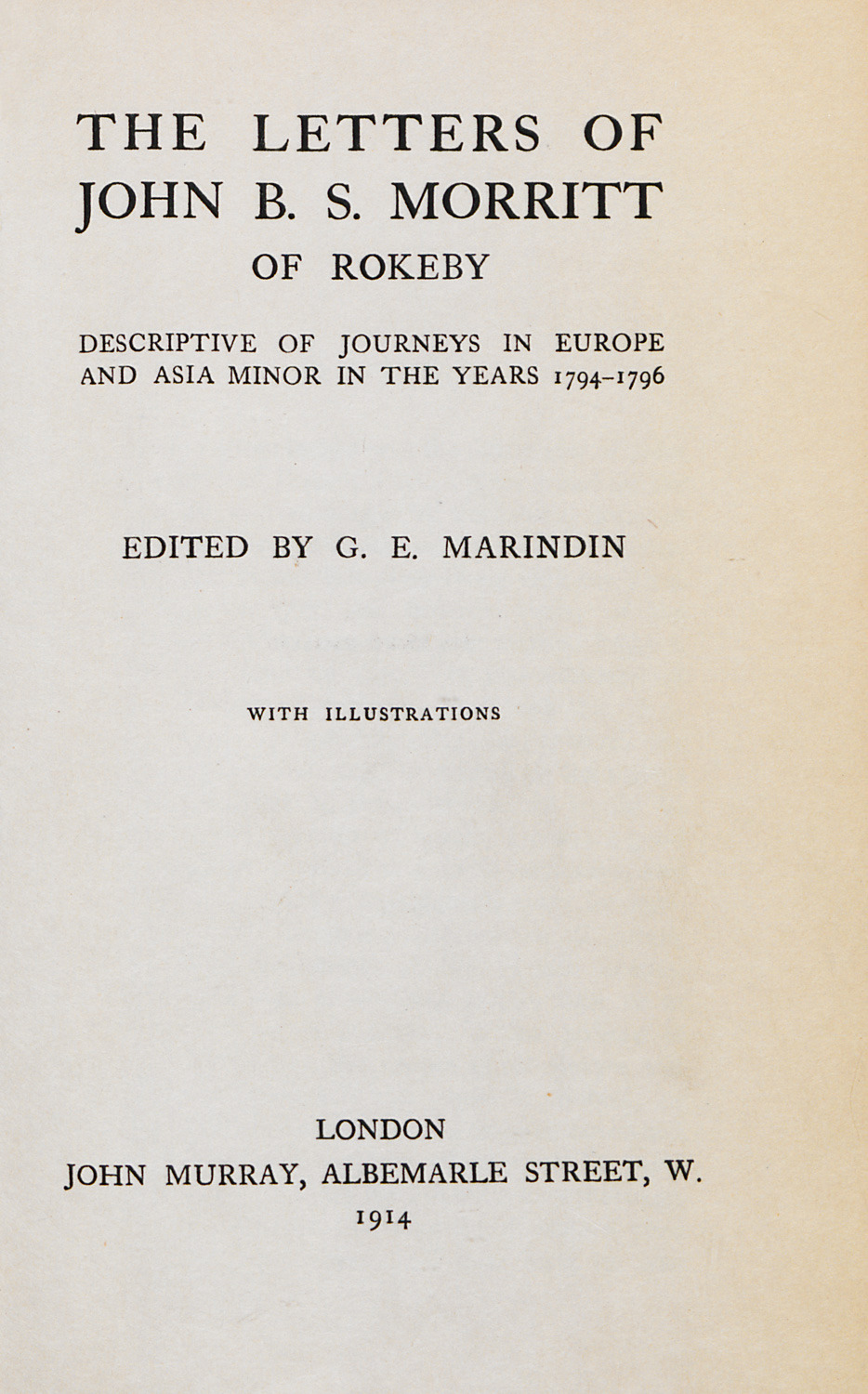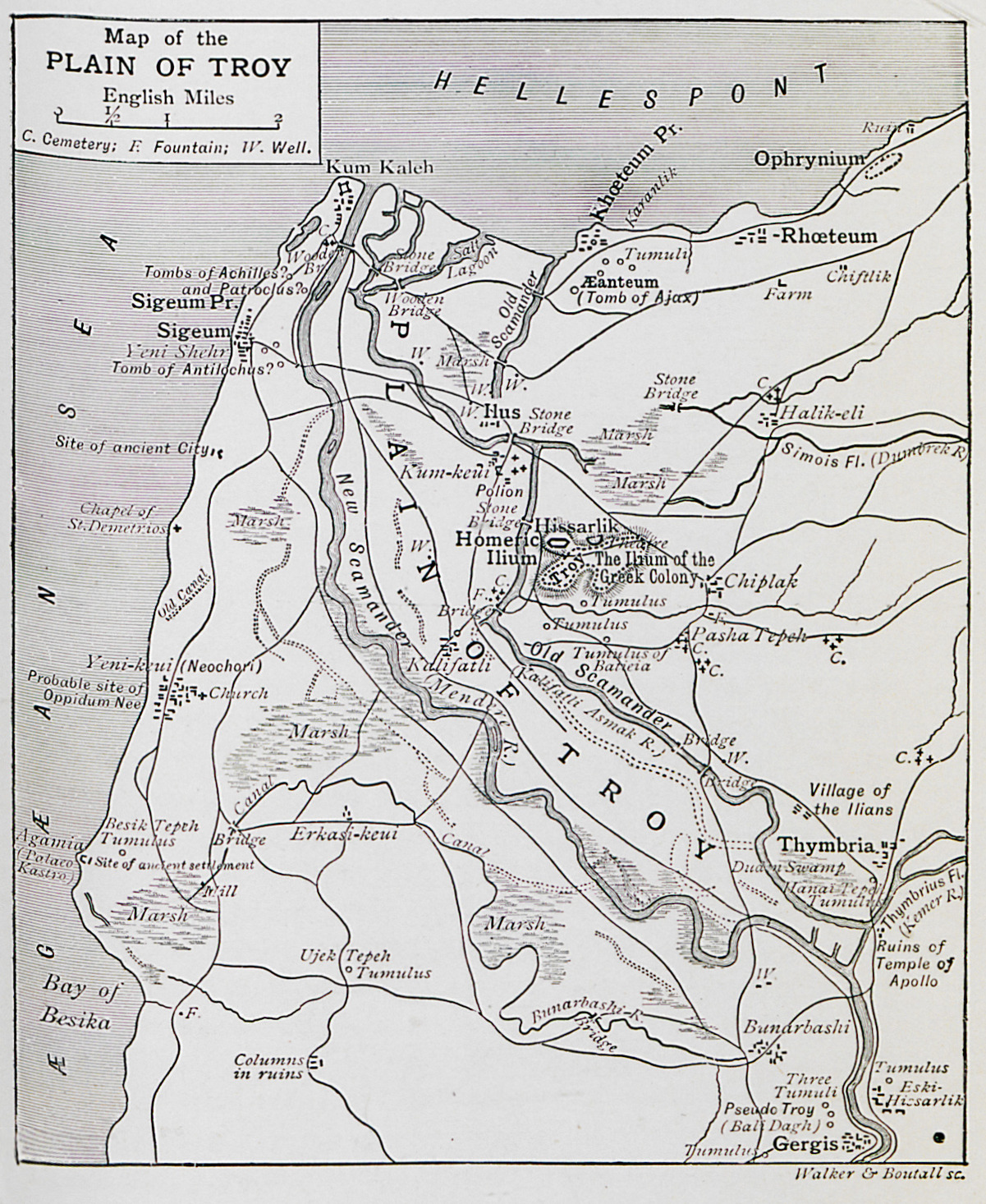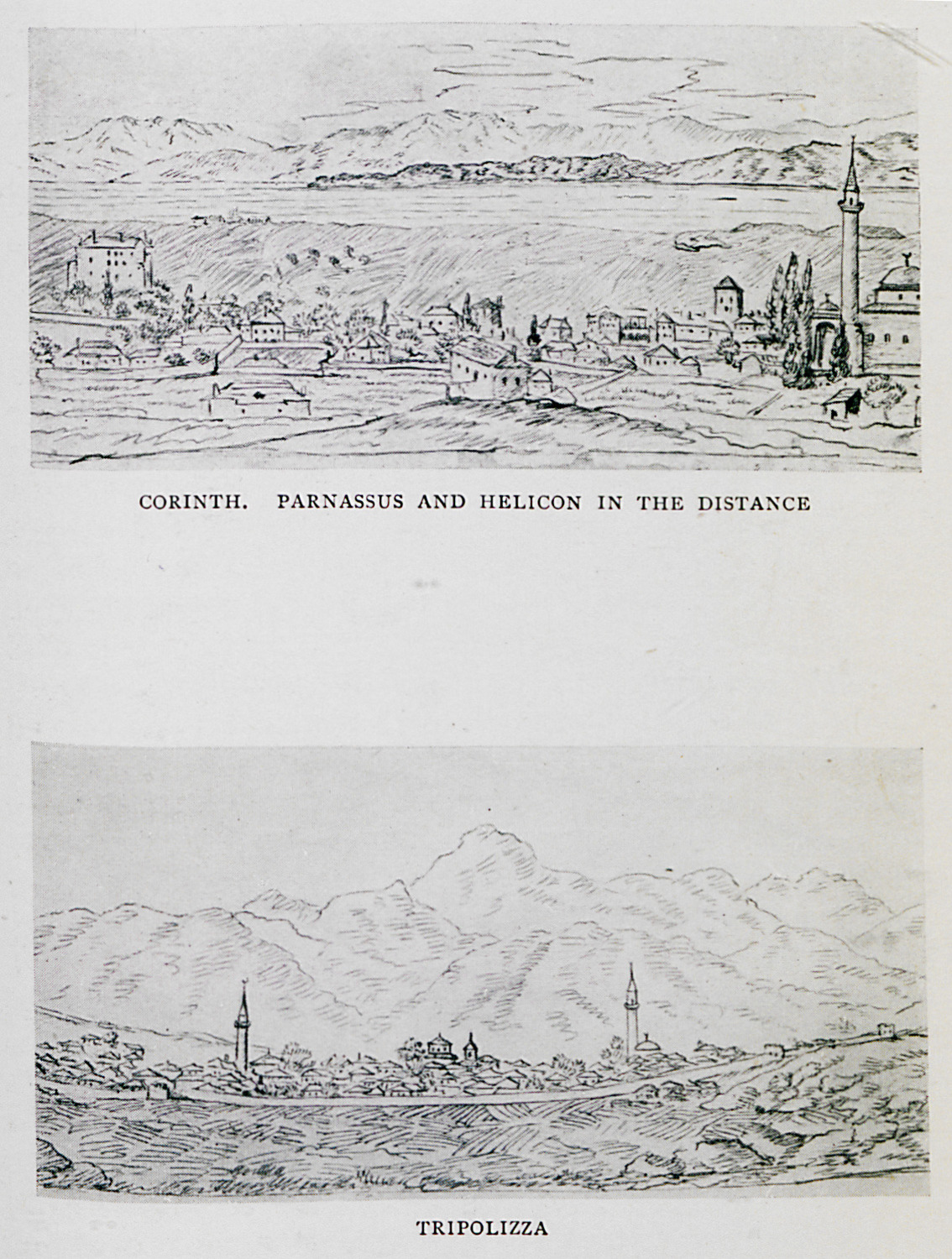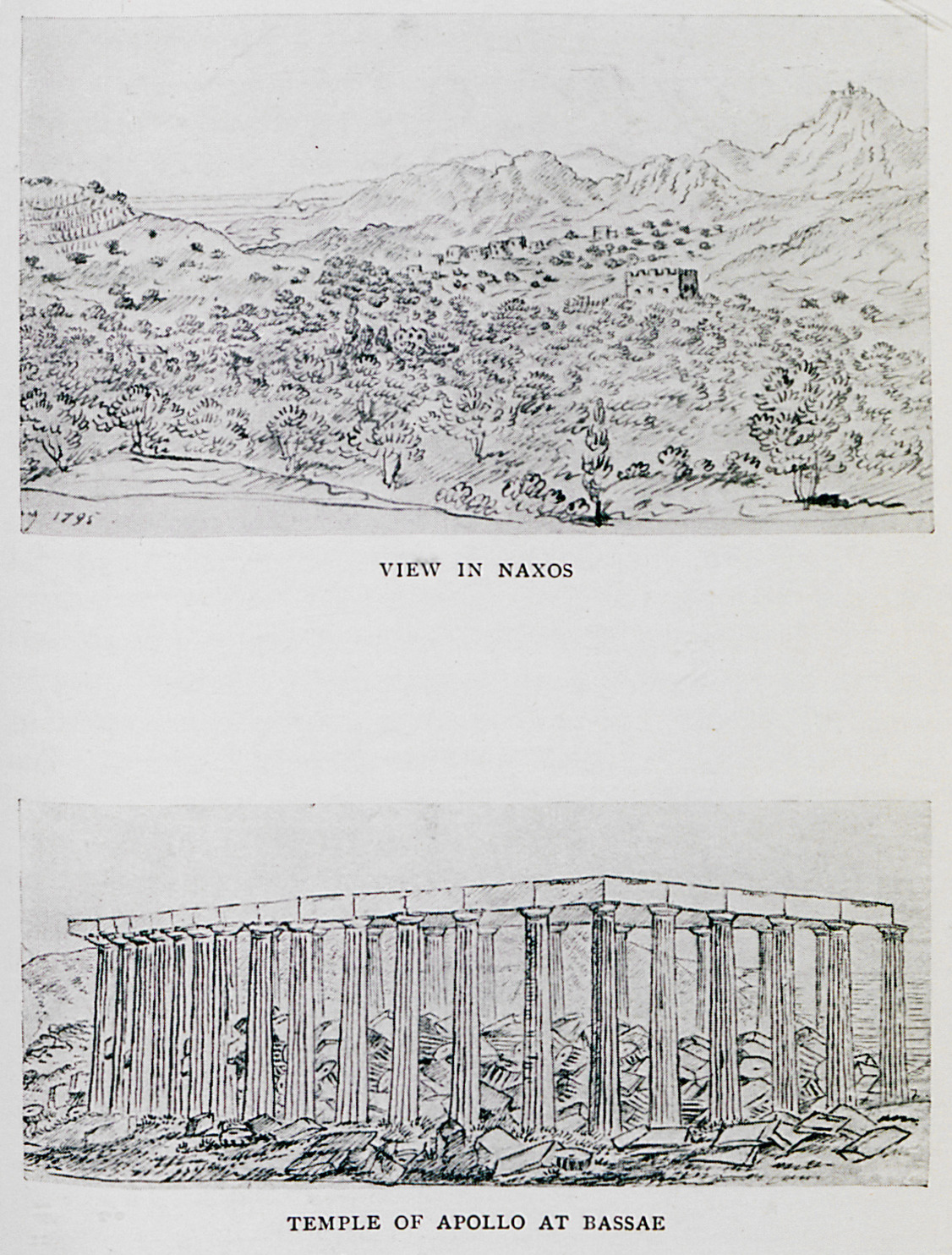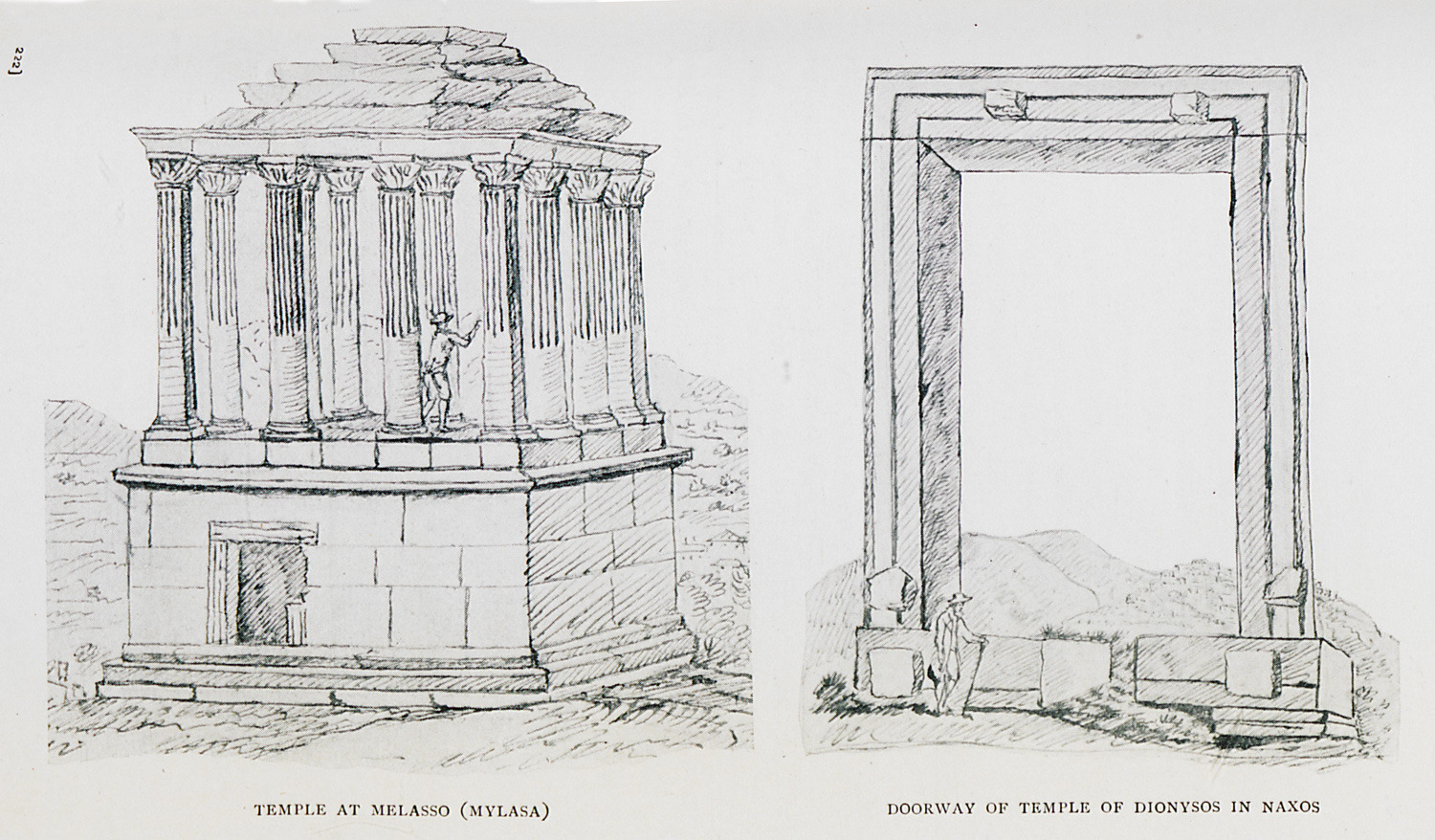MORRITT, John Bacon Sawrey. The letters of John B. S. Morritt of Rokeby. Descriptive of journeys in Europe and Asia Minor in the years 1794-1796..., Londra, J. Murray, 1914.
The English scholar and politician John Bacon Sawrey Morritt (1772? -1843) studied at St. John’s College, Cambridge, from where he graduated in 1794. As he had inherited the estate of Rokeby from his father, he was able to start on his travels to the East immediately after completing his studies. Moritt possessed excellent knowledge of Greek and Latin literature, was very proficient in archaeological explorations and a fine narrator. He returned to Yorkshire in 1796, and initially stayed away from politics, only to become actively involved later on. His inclination for art, literature and archaeology drove him to produce remarkable treatises on history, important works on the topography of Troy, and studies on ancient sculpture. He also wrote a series of political pamphlets.
Moritt set out on his voyage to the Ottoman empire from London in 1794. He crossed Central Europe (Brussels, Dresden, Vienna, Budapest and Bucarest) and eastern Thrace, and reached Istanbul together with his two companions. While in that city, he met two other British travellers, the botanist J. Sibthorp and the geologist J. Hawkins.
Moritt toured Troy with J. Dallaway and painter Gaetano Mercati. He also visited Nicomedea (Izmit), Nicaea (Iznik), Bursa, Izmir, Priene, Ephesus and Miletus. From Izmir he travelled to Samos and then Chios, Lesbos, Mount Athos and Thessaloniki, and from there to Thessaly and Boeotia, to finally reach Athens in January 1795. His tour continued in Attica and the Peloponnese (Corinth, Tripolis, Orchomenus, Tegea, Mystras, Argos, Nafplion, Ermione) as far as Mani in Laconia: after D. Galan in the 16th century, Moritt was the first to travel to the inland of Mani, and rendered a detailed picture of Mani society. Afterwards, he visited Kea, Myconos, Naxos, Delos, Paros, Amorgos, Kos, Halicarnassus (Bodrum), Mylasa (Milas), Knidos and Rhodes. He then sailed to Crete and subsequently travelled to Milos, Cythera, Pyrgos and Olympia in the Peloponnese. He sailed to Naples from Zakynthos, and, by way of Rome, Venice, Trieste and Vienna reached home in July 1796.
Later on, Moritt became active in politics, was elected in the Parliament and socialized with eminent personalities of letters and politics. He joined the Dilettante Society and was co-founder of the aristocratic Travellers Club. Apart from his archaeological works, he also published studies on ancient Greek poetry.
Moritt's travel account was published in 1913. It consists of his letters to his family during his travels. The drawings which illustrate the edition are the work of a Viennese draughtsman who accompanied Morritt in his tour.
Written by Ioli Vingopoulou


